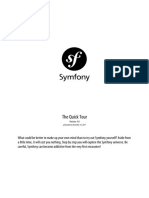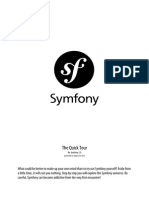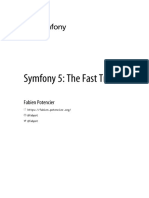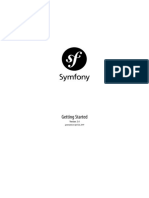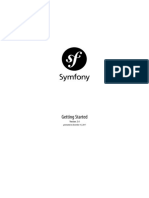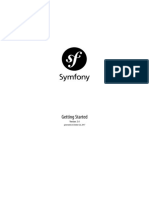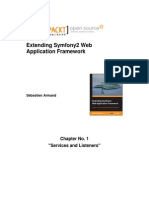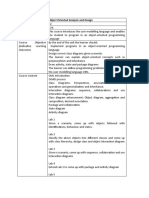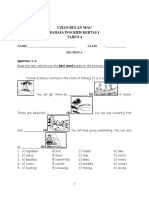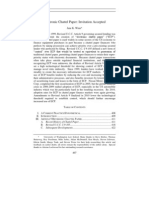0% found this document useful (0 votes)
129 views4 pagesIntroduction To Symfony
The document provides an introduction and instructions for installing the Symfony framework and creating a basic Symfony project. It discusses installing Symfony CLI, creating a new project using the website skeleton, initializing a git repository, creating a basic controller and route, rendering templates with Twig, and setting up the database with Doctrine.
Uploaded by
Aymen AdlineCopyright
© © All Rights Reserved
We take content rights seriously. If you suspect this is your content, claim it here.
Available Formats
Download as PDF, TXT or read online on Scribd
0% found this document useful (0 votes)
129 views4 pagesIntroduction To Symfony
The document provides an introduction and instructions for installing the Symfony framework and creating a basic Symfony project. It discusses installing Symfony CLI, creating a new project using the website skeleton, initializing a git repository, creating a basic controller and route, rendering templates with Twig, and setting up the database with Doctrine.
Uploaded by
Aymen AdlineCopyright
© © All Rights Reserved
We take content rights seriously. If you suspect this is your content, claim it here.
Available Formats
Download as PDF, TXT or read online on Scribd
/ 4



